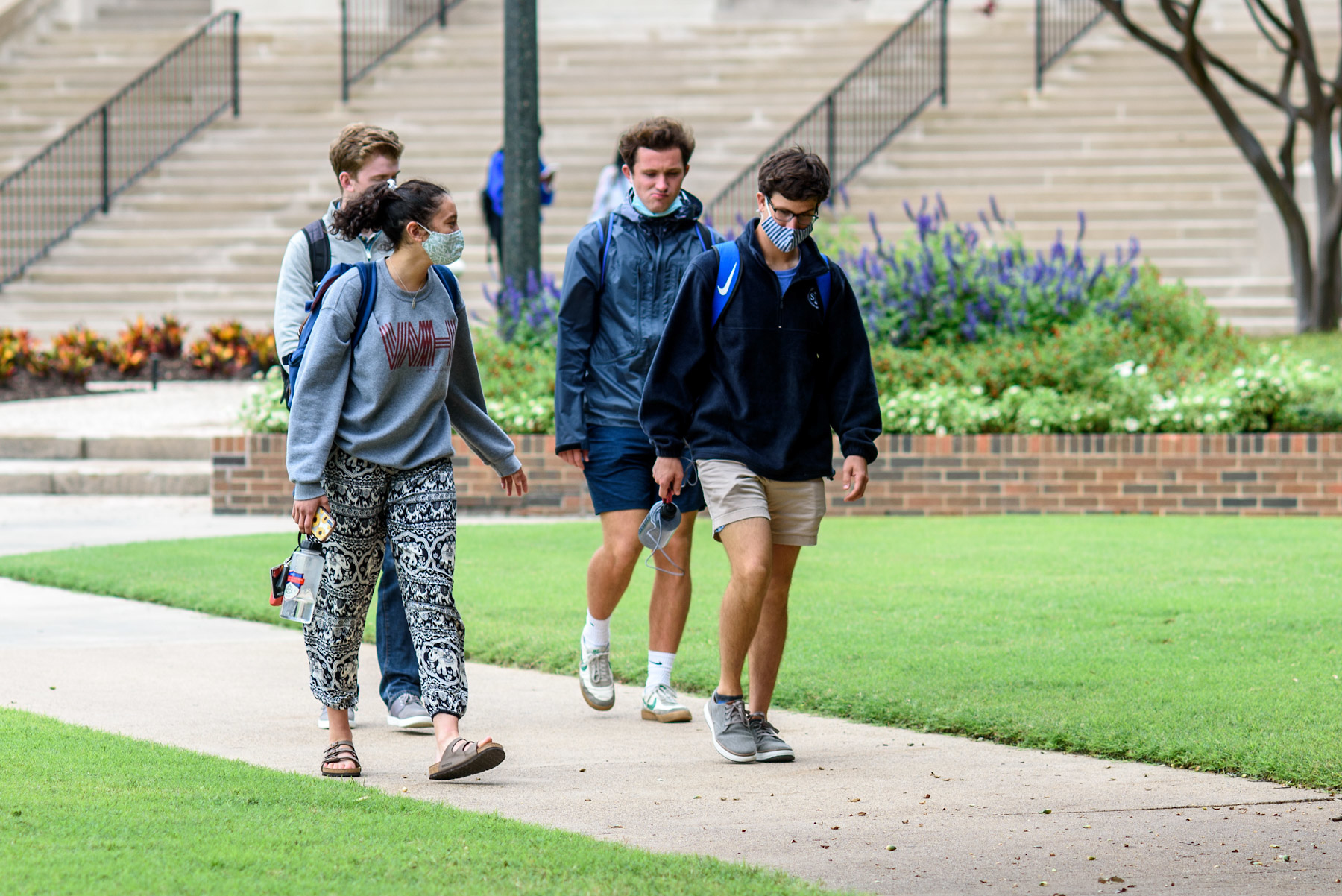Right on cue, cooler weather arrived with the beginning of fall, a welcome break from the North Texas heat. That cooler weather is the background to school openings and Gov. Greg Abbott further loosening of capacity restrictions for restaurants and retailers, which can now welcome 75 percent of their occupancy maximums. For those whose jobs are to monitor COVID-19, those things make for a troubling combination.
“We are watching all the indicators closely. [The threat level] went from red to orange, and we’re hoping we can stay in orange or go down to yellow,” says Dallas County Medical Director Dr. Philip Huang, referring the county’s color-coded guidance over what is safe to do in public. “But there are a lot of things going on right that can impact what we are seeing in our community.”
For the most part, Huang says universal masking and social distancing has been working since the Fourth of July, but with schools reopening, he is staying focused on the number of new cases, the positivity rate of testing, hospitalizations, and ER visits. College towns have emerged as hotspots in Texas and around the country as universities reopen to in-person schooling. The Texas Tribune reported that in cities where college students make up at least 10 percent of the population, COVID-19 cases are up 34 percent since August 19. The rest of the state has seen an increase of 23 percent.
“We are seeing the activity, and we are concerned because it’s very precarious,” Huang says.
Locally, daily new cases have been steady, and hospitalizations in the region for COVID-19 have hovered between 780 and 749 for the last week or so, well within the range of capacity acceptability.
Nationwide, the seven-day average of cases bottomed out in early September at around 35,000 but has steadily climbed back up near 45,000 new cases per day since, according to the Johns Hopkins Coronavirus Resource Center. It hasn’t made as many headlines because most recent cases have occurred away from larger media centers. Wisconsin, Missouri, Iowa, and Tennessee are experiencing outbreaks as things have calmed down on the east coast. The country passed 200,000 deaths due to the virus this week, as Dallas County marked over 1,000 deaths.
“We’ve been sort of flat, but some indicators are starting to go up that are worrisome,” Huang says, who added that he was meeting with hospitals to learn more about projections later this week.
Last week, Abbott opened up restaurants, offices, gyms, museums, and more to 75 percent capacity if they are in a hospital region that, for at least seven consecutive days, has 15 percent or less of its hospital beds filled with COVID-19 patients. Dallas’ COVID-19 hospital percentage has been around 6 or 7 percent for weeks, and its provisional seven-day average for daily new confirmed and probable cases was last week 240, compared to the daily average of 279 the week prior.
The state changed the way it is reporting daily case numbers, moving from reporting them on the day the result was received to the day the test was given. That means the numbers will change as results come in. Dallas County has been more concerned with less variable statistics. With unreliable testing, delays in getting reports, and other factors, Huang says hospital data is critical.
“The hospital indicators are a little more stable, because no matter whether somebody got tested or not, if they get sick enough to have to go to the emergency department, be admitted, or go into the ICU, those are independent of testing,” Huang says.
Dallas County did not see the spike following Labor Day that it did after Memorial Day, but there are still threats to the improving situation. By October 2, UT Southwestern Medical Center’s COVID modeling predicts that there will be an increase of 240 to 480 hospitalizations and 520 new daily cases of COVID-19.
By year’s end, if conditions stay the same, there will be around 1,000 new cases per day. Still, small differences in the effectiveness of masking and social distancing can have a massive impact. Right now, those measures are 63 percent effective according to UTSW, but if that were to decrease to being 61 percent effective, new daily cases could be as high as 2,500 by the end of 2020. On the other hand, an increase to 68 percent effectiveness could bring new daily cases under 100.
Models change, but Huang advises continued vigilance. Avoid crowds, socialize outside, wear your mask, and stay six feet from others.
“There’s definitely some COVID fatigue,” Huang says. “Simultaneously, the governor is starting to open up some things, and the schools. All of it can contribute to some relapsing. People need to be able to keep staying the course on this as much as they can.”





